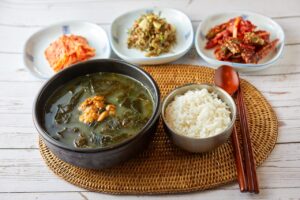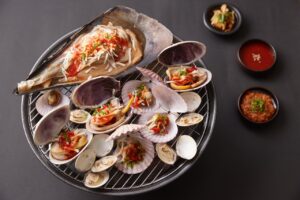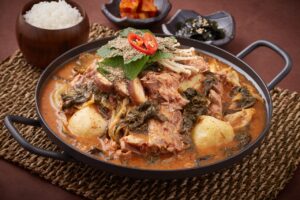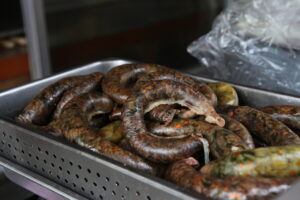-
Vegetarian and Vegan Korean Food.

Korean cuisine may seem heavily meat-based, but there are plenty of delicious vegetarian and vegan options available. Many traditional Korean dishes can be adapted to be vegetarian or vegan by substituting or omitting certain ingredients. Additionally, there are specific dishes that are naturally vegetarian or vegan. Here are some popular vegetarian and vegan Korean food options:
1. Bibimbap (비빔밥) – Vegetarian/Vegan Option: Bibimbap is a versatile mixed rice dish that can easily be made vegetarian or vegan by omitting the meat and egg. The dish typically includes a variety of seasoned vegetables, such as spinach, carrots, cucumber, bean sprouts, and mushrooms, on top of a bed of rice. You can also enjoy it with a spicy gochujang sauce.
2. Kimbap (김밥) – Vegetarian/Vegan Option: Kimbap is often referred to as Korean sushi. It consists of rice, vegetables, and sometimes pickled radish or tofu wrapped in seaweed. You can customize the fillings according to your preference, making it easy to create vegetarian or vegan versions.
3. Japchae (잡채) – Vegetarian/Vegan: Japchae is a sweet and savory stir-fried dish made with glass noodles (sweet potato starch noodles) and various vegetables like spinach, carrots, onions, and mushrooms. It’s typically seasoned with soy sauce, sesame oil, and sugar, and it’s naturally vegetarian and vegan-friendly.
4. Doenjang Jjigae (된장찌개) – Vegetarian/Vegan Option: Doenjang jjigae is a hearty and savory Korean soybean paste stew. You can make it vegetarian by using vegetable broth instead of anchovy or beef broth, and by adding a variety of vegetables like zucchini, mushrooms, radish, and tofu.
5. Kongnamul Gukbap (콩나물국밥) – Vegetarian/Vegan: Kongnamul gukbap is a comforting and nourishing bean sprout soup served with rice. The soup is made with soybean sprouts, and you can add vegetables and seasonings to enhance the flavor.
6. Tteokbokki (떡볶이) – Vegan Option: While the classic tteokbokki includes fish cakes, you can find vegan-friendly versions that omit the fish cakes and use only vegetables, tofu, or other plant-based proteins.
7. Hobak Jeon (호박전) – Vegan: Hobak jeon is a savory Korean pancake made with sliced zucchini. The batter is typically made with flour and water, making it suitable for vegans.
8. Kimchi (김치) – Vegan: Most traditional kimchi recipes are vegan, made with napa cabbage or other vegetables, flavored with gochugaru (red pepper flakes), garlic, ginger, and other seasonings.
9. Kkakdugi (깍두기) – Vegan: Kkakdugi is a type of kimchi made with diced radishes. It’s a popular side dish that’s also vegan.
10. Gamjatang (감자탕) – Vegan Option: While gamjatang is traditionally made with pork bones, you can find vegan versions made with potatoes and other vegetables, cooked in a flavorful broth.
These are just a few examples of the many delicious vegetarian and vegan Korean dishes available. When dining out, you can always inform the restaurant staff about your dietary preferences, and they will often be happy to accommodate your needs. Enjoy exploring the rich flavors of Korean cuisine in its vegetarian and vegan forms!
-
Dakgalbi, Ranked 2nd in “The World’s Best Stir-Fry Meals” Sep 2023
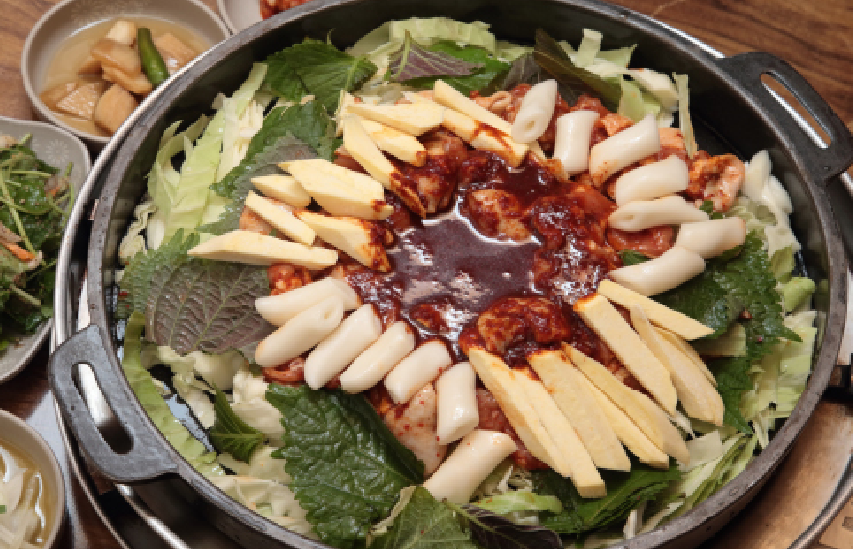
Dakgalbi is a spicy stir-fried chicken dish that originated in Chuncheon, Gangwon Province. It features marinated chicken cooked with gochujang, cabbage, sweet potatoes, and other vegetables, creating a spicy and flavorful medley.
akgalbi (닭갈비) is a delicious and popular Korean dish that originated in Chuncheon, a city in Gangwon Province. It has gained widespread popularity throughout Korea and is now enjoyed by locals and visitors alike. Dakgalbi is known for its spicy and savory flavors, and it’s a must-try for anyone exploring Korean cuisine. Here’s more information about this tasty dish:
Cooking Method
Ingredients:
- Chicken: The main ingredient is boneless chicken, usually cut into small pieces for quick and even cooking. It’s commonly made with chicken thighs or breast meat.
- Gochujang (Korean red chili pepper paste): The spicy and flavorful gochujang is a key component of the marinade that gives Dakgalbi its characteristic spiciness.
- Vegetables: It typically includes an assortment of vegetables like cabbage, sweet potatoes, scallions, onions, carrots, and perilla leaves (sesame leaves). These vegetables add color, texture, and a range of flavors to the dish.
- Rice Cake: In some variations, sliced tteok (rice cake) is added to it, complementing the dish with its chewy texture.
- Gochugaru (Korean red pepper flakes): In addition to gochujang, gochugaru is used to enhance the spiciness of the marinade.
- Soy Sauce: Adds a savory umami taste to the dish.
- Sugar: Balances the spiciness and adds a touch of sweetness to the marinade.
- Sesame Oil: For aroma and flavor.
Preparation and Cooking:
- The boneless chicken pieces are marinated in a mixture of gochujang, gochugaru, soy sauce, sugar, and sesame oil, allowing the flavors to infuse into the meat.
- The marinated chicken is then stir-fried in a large, shallow pan (sometimes on a grill) along with the vegetables and rice cakes. The pan is often placed on the table so diners can enjoy the interactive experience of cooking their own Style.
- While stir-frying, additional seasonings and sauces may be added to enhance the flavor, such as garlic, ginger, and a sprinkling of black pepper.
- The dish is cooked until the chicken is fully cooked through, the vegetables are tender, and the flavors have melded together, resulting in a rich and spicy sauce coating all the ingredients.
Serving: It is typically served with various accompaniments, including:
- Lettuce Leaves: To wrap the cooked chicken and vegetables, adding a refreshing crunch to each bite.
- Perilla Leaves (Sesame Leaves): A popular leafy vegetable in Korean cuisine, which can be wrapped around that for added flavor.
- Kimchi: A staple in Korean cuisine that complements the spiciness of it.
- Rice or Cheese: Some restaurants offer options to add cooked rice or melted cheese to the leftover sauce in the pan, creating an additional rice dish or cheese fondue.
Enjoyment and Variations: Dakgalbi is often enjoyed with friends or family due to its interactive and communal nature. The diners get to cook their own food and adjust the spiciness and seasonings according to their preferences.
While the traditional one is spicy, some restaurants offer non-spicy or mild versions for those who prefer a milder taste. Some variations of it also include other meats like pork or seafood, catering to different taste preferences.
Recommended Restaurant in Korea for Dakgalbi.
- Chuncheon Myeongdong Dakgalbi Street (춘천 명동 닭갈비 거리): Located in Chuncheon, the birthplace of it, this area is famous for its many restaurants. You can find various eateries offering this dish with different flavors and styles. The vibrant atmosphere and the opportunity to enjoy in its hometown make it a popular destination for food lovers.
- Yoogane (유가네): Yoogane is a chain of restaurants specializing in this market, with branches across Korea and even some international locations. They offer a variety of options, including different levels of spiciness and additional ingredients. It’s a well-known and reliable choice for enjoying this classic Korean dish.
- Chuncheon Chamsutbul Dakgalbi (춘천 참숯불 닭갈비): This restaurant in Chuncheon is famous for its charcoal-grilled one, which adds a smoky flavor to the dish. They use high-quality ingredients, and their Dakgalbi is loved by locals and visitors alike.
- Makguksu & Dakgalbi Alley in Dongmakgol (동막골 막국수 & 닭갈비 골목): This alley in Dongmakgol, Chuncheon, is known for its selection of restaurants specializing in both makguksu (buckwheat noodles) and Dakgalbi. It’s a great place to sample these iconic dishes of Chuncheon.
- Pimatgol Dakgalbi (피맛골 닭갈비): Located in Seoul, this restaurant is praised for its tender and well-seasoned Dakgalbi. They offer a cozy and authentic dining experience in the heart of the city.


2023 춘천 막국수닭갈비 축제 (mdfestival.com) This Korean Food Ranked 2nd in “The World’s Best Stir-Fry Meals” (newsbeezer.com)
Recommend to Read >>>

Korean World Star is Tteokbokki(떡볶이) – amazing Korean Food (mycafe24.com) -
Patbingsu is best dessert in summer 2023 Aug
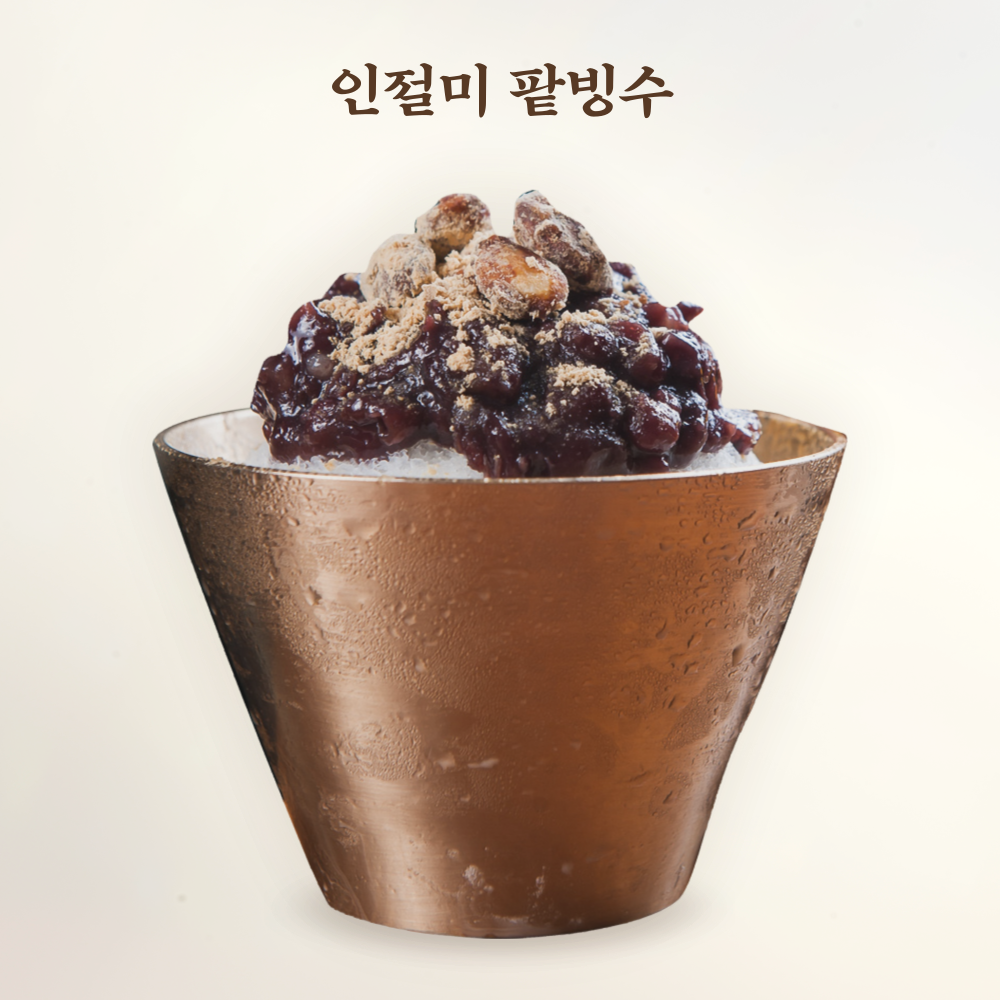
Patbingsu (빙수) is a beloved Korean dessert known for its refreshing and delightful taste. It is a type of shaved ice dessert that has become hugely popular in Korea, especially during the hot summer months. Here’s a more detailed explanation of this delicious Korean treat:
History of Patbingsu
Origins of Patbingsu: The history of patbingsu dates back several centuries. The origins of patbingsu can be traced to Korea’s royal courts during the Joseon Dynasty (1392-1897). However, the dish as it’s known today has evolved over time and has been influenced by cultural shifts, ingredients, and modern tastes.
Early Forms: The early forms of patbingsu were quite different from the modern version. They consisted of crushed ice topped with various ingredients like honey, fruits, and sweetened red beans. These early versions were likely enjoyed by royalty and the aristocracy.
Introduction of Modern Ingredients: The modern form of patbingsu began to take shape in the 20th century, especially after the introduction of ingredients like sweetened condensed milk, which added a creamy and rich element to the dish. In the mid-20th century, as refrigeration and frozen food technology became more accessible, the dish further evolved to include shaved ice and a wider variety of toppings.
Post-War Influence: After the Korean War, during the 1950s and 1960s, patbingsu gained popularity as a refreshing treat during the hot summer months. Street vendors and small shops began selling variations of the dish, often with red bean paste and fruits as common toppings.
Modernization and Variations: As South Korea’s economy and society developed, patbingsu underwent further transformation. New variations emerged, incorporating ingredients like ice cream, flavored syrups, chocolate, cookies, and even savory elements. The dish also became more widely available in cafes and restaurants, evolving from a simple street food to a dessert enjoyed in various settings.
Cultural Icon and Trends: Today, patbingsu is not only a beloved dessert but also a cultural icon in South Korea. It’s especially popular during the summer months when people seek relief from the heat. In recent years, patbingsu has seen trends and fads that include creative and extravagant toppings, making it a visually appealing dessert for social media sharing.
Local and Global Popularity: While patbingsu is enjoyed throughout South Korea, it has also gained international recognition. Korean cafes and restaurants around the world offer their own versions of patbingsu, introducing it to a global audience.
Conclusion: The history of patbingsu is a testament to how traditional dishes can evolve and adapt to changing times and tastes. From its humble beginnings in the royal courts to its modern forms enjoyed by people of all ages, patbingsu remains a delightful and refreshing dessert that has captured the hearts and taste buds of Koreans and dessert enthusiasts around the world.
Cooking Method
Preparation: Bingsu starts with a base of finely shaved ice, which is achieved by using a specialized machine that shaves ice into thin, fluffy flakes. The result is an incredibly light and delicate texture that melts in your mouth.
Toppings: The shaved ice is then generously topped with a variety of sweet ingredients that add flavor, color, and texture to the dessert. Some common toppings for bingsu include:
- Red Bean Paste (Patbingsu): The traditional and most popular bingsu variation, where the shaved ice is topped with sweet red bean paste, known as “pat” in Korean. The red bean paste is often cooked with sugar to give it a rich, sweet taste.
- Fresh Fruits: Bingsu can be adorned with a colorful assortment of fresh fruits such as strawberries, mangoes, kiwis, blueberries, and more, adding a refreshing and natural sweetness.
- Condensed Milk: Drizzling condensed milk over the shaved ice gives it an extra creamy and sweet flavor.
- Ice Cream: A scoop of ice cream on top of the shaved ice adds a creamy, cool element and complements the sweetness of the toppings.
- Tteok (Rice Cakes): Some bingsu varieties include chewy rice cake pieces, adding a delightful contrast in texture.
- Nuts and Seeds: Bingsu may be sprinkled with chopped nuts, such as almonds or peanuts, and seeds like sunflower or pumpkin seeds, providing a crunchy component.
Variations: Bingsu comes in many flavors and combinations, making it a versatile dessert with something for everyone. Besides the classic patbingsu, there are numerous creative and innovative variations, including:
- Oreo Bingsu: With crushed Oreo cookies and a scoop of cookies and cream ice cream.
- Matcha Bingsu: Featuring matcha (green tea) powder, red bean paste, and sometimes mochi (chewy rice cake) pieces.
- Fruit Bingsu: Highlighting various fresh fruits with no red bean paste, making it a lighter and more fruit-focused option.
Serving: Bingsu is typically served in large bowls or containers, making it perfect for sharing. It is a popular dessert to enjoy with friends or family during warm days, as it offers a cooling and satisfying treat.
Bingsu has become so popular that it is not limited to Korea; you can find bingsu shops in many places around the world, especially in areas with a significant Korean community or popularity of Korean culture. It’s a must-try dessert that will leave you craving more!

image : miricanvas.com Place for Patbingsu >> Yonghodong Halmae Patbingsu Danpatjuk
Recommend to read >> 2023 Korean Andong Jjimdak Recipe
-
Tteokbokki (떡볶이) is Korean World Star Aug 2023
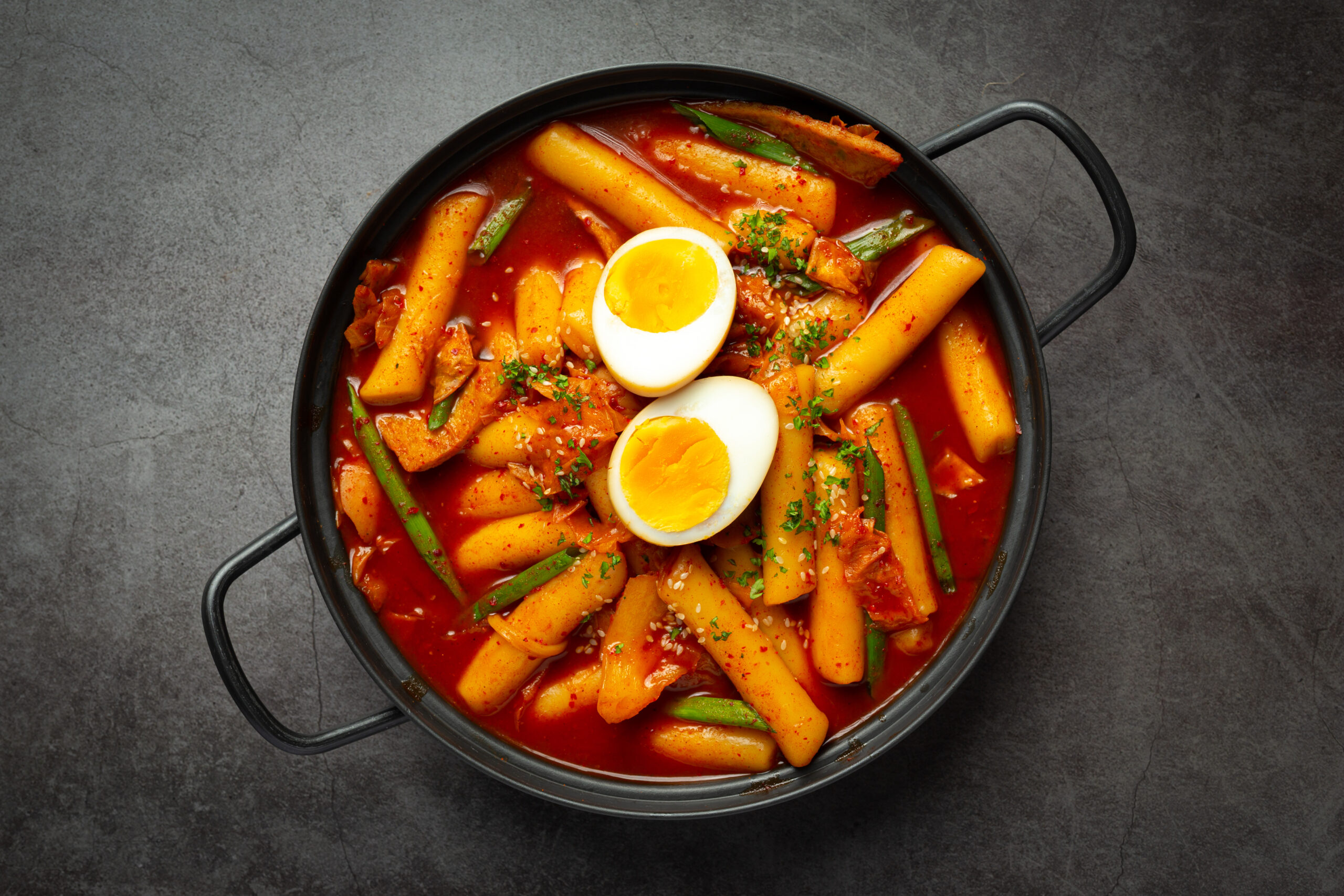
What is Ttekbokki?
Tteokbokki (떡볶이) is a popular Korean street food and a beloved dish in Korean cuisine. It consists of chewy rice cakes (called tteok) that are cooked in a spicy and flavorful sauce made primarily with gochujang, a Korean red chili paste. The dish is often garnished with other ingredients like fish cakes (oden), boiled eggs, and scallions.
The meaning of the name
The key ingredient, tteok (rice cakes), is made from glutinous rice flour and water, resulting in a chewy and slightly sticky texture. Tteokbokki rice cakes are cylindrical or oval in shape and are available in various sizes and thicknesses, depending on personal preference and regional variations.
The spicy sauce used in it is made by combining gochujang (Korean red pepper paste), soy sauce, sugar, garlic, and sometimes other seasonings like sesame oil and black pepper. The combination of the fiery gochujang and the soft, chewy rice cakes creates a delightful contrast of flavors and textures.
It can be found in many forms, ranging from street food stalls to sit-down restaurants. It is a popular comfort food and a favorite snack among Koreans of all ages. While the classic version is spicy, there are also non-spicy variations available for those who prefer a milder taste.
In addition to the traditional version, tteokbokki has evolved over the years with various creative twists and additional ingredients. Some variations include adding cheese, seafood, instant noodles (ramyeon), or other vegetables to enhance the flavor and texture.
Tteokbokki is not only popular in Korea but has also gained popularity internationally, becoming a dish enjoyed by people around the world who appreciate its unique and addictively spicy taste. It’s definitely a must-try if you ever get the chance to explore Korean cuisine.
History of Tteokbokki
Tteokbokki (떡볶이) is a popular Korean dish made with chewy rice cakes that are stir-fried in a spicy and flavorful sauce. It has a history that spans several decades and has evolved from a simple street food to a beloved comfort dish enjoyed by people of all ages in Korea. Here’s a brief overview of the history of tteokbokki:
Origins and Early Forms: Tteokbokki’s origins can be traced back to the Joseon Dynasty (1392-1897), where it was initially known as “siru tteok” or “gungjung tteokbokki.” In its early forms, tteokbokki was enjoyed by the royal court and aristocracy as a dish made with sliced rice cakes, beef, vegetables, and soy sauce.
Post-War Changes: After the Korean War, during the mid-20th century, tteokbokki underwent significant changes. The dish began to evolve from its royal court origins into a more accessible street food. It transitioned from being a soy sauce-based dish to a spicy and gochujang (red chili paste) based dish, which is the version that’s widely recognized today.
Street Food and Popularization: Tteokbokki gained popularity as a street food in the 1950s and 1960s. Vendors would set up stalls in busy areas, selling tteokbokki to passersby. The dish’s affordability and satisfying flavors made it a favorite among students and working-class individuals.
Modernization and Variations: As South Korea’s economy and society developed, tteokbokki continued to evolve. The dish started to incorporate additional ingredients such as fish cakes, boiled eggs, and vegetables to enhance its flavors and textures. Different regions in Korea also developed their own variations of tteokbokki, adding unique ingredients and flavors to the dish.
Cultural Icon: Tteokbokki is now considered a quintessential Korean comfort food. It’s often enjoyed in various settings, from street food stalls and markets to restaurants and homes. It’s a dish that carries a sense of nostalgia for many Koreans, reminding them of their childhood and simpler times.
Global Popularity: Tteokbokki’s popularity has extended beyond Korea’s borders. Korean cuisine’s global rise in popularity has introduced tteokbokki to international audiences. Korean restaurants around the world offer their own interpretations of the dish, allowing people from different cultures to experience its unique flavors.
In summary, the history of tteokbokki reflects its evolution from a royal court dish to a beloved street food and comfort dish enjoyed by people from all walks of life. Its ability to adapt to changing times and tastes while maintaining its core elements has contributed to its enduring popularity both in Korea and beyond.
Cooking Method
Ingredients:
- 200g of tteok (rice cakes) – cylindrical or oval-shaped
- 1 cup of fish cakes (oden) – sliced into bite-sized pieces
- 2 cups of water
- 2 tablespoons of gochujang (Korean red chili paste)
- 1 tablespoon of soy sauce
- 1 tablespoon of sugar
- 2 cloves of garlic – minced
- 1 tablespoon of vegetable oil
- 1/2 cup of chopped scallions (green onions)
- Sesame seeds (optional, for garnish)
Instructions:
- Soak the tteok in cold water for about 20-30 minutes to soften them. Drain the water before using them in the dish.
- In a large saucepan or wok, heat the vegetable oil over medium heat. Add the minced garlic and stir-fry for about 30 seconds until fragrant.
- In a separate bowl, mix the gochujang, soy sauce, and sugar to make the spicy sauce.
- Add the spicy sauce to the saucepan/wok and stir to combine with the garlic.
- Pour in the water and bring it to a simmer. Let the sauce cook for a few minutes until it thickens slightly.
- Add the soaked tteok and fish cakes to the sauce, stirring gently to coat them evenly with the sauce.
- Continue simmering the tteokbokki on medium-low heat for about 10-15 minutes or until the rice cakes become soft and chewy, and the sauce thickens to your desired consistency.
- If the sauce becomes too thick, you can add more water to adjust the consistency.
- Add the chopped scallions and stir them into the tteokbokki.
- Serve the tteokbokki hot, optionally garnishing with sesame seeds for added flavor.
Note: Feel free to get creative with the ingredients. You can add other vegetables like sliced carrots, onions, or cabbage, and even some boiled eggs or instant noodles (ramyeon) to make a heartier version.
Recommended Place of Street Foods in Korea.
In Korea, you can find tteokbokki in various places, especially in bustling street food markets and popular tourist areas. Here are some common places where you can easily find street vendors and stalls selling tteokbokki:
- Myeongdong (명동): Myeongdong in Seoul is a famous shopping district and a popular tourist destination. Here, you’ll find numerous street food vendors selling tteokbokki along with other Korean snacks.
- Namdaemun Market (남대문시장): Namdaemun Market, also located in Seoul, is one of Korea’s largest traditional markets. It’s a great place to explore and try various street foods, including tteokbokki.
- Gwangjang Market (광장시장): Gwangjang Market, also in Seoul, is known for its vibrant food alley where you can find an array of Korean street food delights, including tteokbokki.
- Insadong (인사동): Insadong is a cultural district in Seoul, famous for its traditional crafts and street food. You’ll find tteokbokki along with other delicious snacks in the area.
- Dongdaemun Design Plaza (동대문디자인플라자): This modern architectural landmark in Seoul has various food stalls in its vicinity, offering tteokbokki and other Korean street foods.
- Busan Street Food Alley: Busan, South Korea’s second-largest city, has its own vibrant street food scene. You can explore street food alleys like Bupyeong Kkangtong Market and Gwangbokro Street to find tteokbokki and more.
- Traditional Markets: Besides the mentioned markets, almost every city and town in Korea has its traditional markets, which are excellent places to find street food vendors and stalls offering tteokbokki and other local delicacies.
- Street Food Festivals and Events: During certain times of the year, there might be street food festivals or events where vendors gather to showcase their culinary creations, including tteokbokki.
When you visit these places, keep an eye out for food carts, tents, or small stalls with signs displaying “떡볶이” or “Tteokbokki” in Korean. These vendors often offer other delicious street foods as well, so it’s an excellent opportunity to sample a variety of Korean snacks and treats. Enjoy the experience of exploring the diverse flavors of Korean street food!

Cheesy Tokbokki korean traditional food on black board background. Lunch dish.
작가 jcomp 출처 FreepikRecommend to Read >> 2023 Korean Andong Jjimdak Recipe
-
Korean Fried Chicken, Let’s go Chimac(치맥)? Aug. 2023
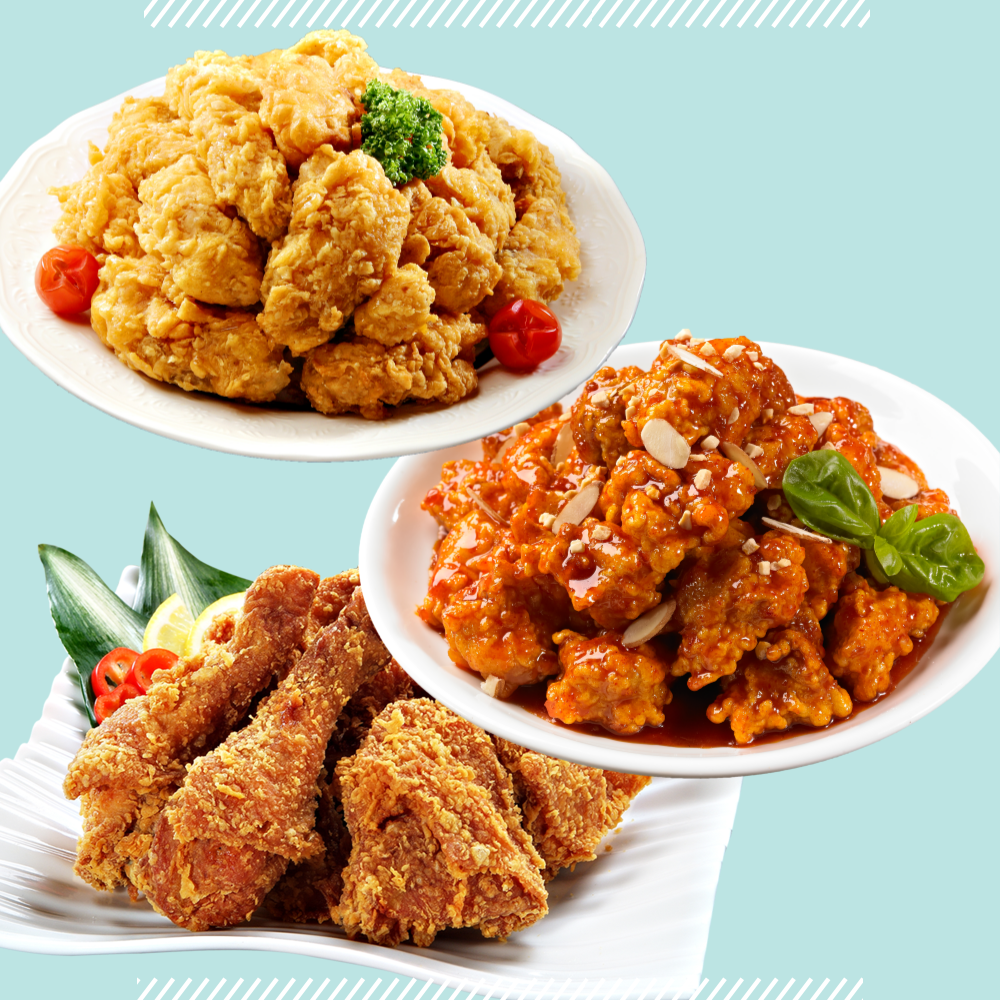

http://www.hansikmagazine.org Korean Fried Chicken Style.
Korean Fried Chicken (KFC) is a style of fried chicken that is known for its distinct characteristics, flavors, and preparation methods compared to other fried chicken styles. Here are some key differences that set Korean Fried Chicken apart:
- Double-Frying Technique:
One of the most notable differences in Korean Fried Chicken is the double-frying technique. The chicken is first fried at a lower temperature to cook the meat through, and then it’s fried at a higher temperature to achieve a crispy and golden exterior. This results in a unique combination of tender and juicy meat with an exceptionally crispy outer layer. - Thin and Crispy Coating:
Korean Fried Chicken features a thin and delicate coating that becomes incredibly crispy due to the double-frying process. The coating is often made using a mixture of wheat flour, cornstarch, and sometimes rice flour, which contributes to its crunchiness. - Variety of Flavors:
KFC is known for offering a wide variety of flavors and sauces. Popular choices include original (with a light seasoning), sweet and spicy, soy garlic, honey butter, and more. The range of flavors allows for diverse taste experiences, catering to different preferences. - Sauces and Glazes:
Korean Fried Chicken is often coated with flavorful sauces or glazes after frying. These sauces can range from spicy and tangy to sweet and savory. The sauces enhance the overall flavor and provide a delicious coating that complements the crispy chicken. - Diverse Cuts and Styles:
In addition to the classic bone-in chicken pieces, Korean Fried Chicken may also include boneless options, chicken tenders, or even whole chicken. This diversity of cuts and styles offers flexibility for consumers to choose their preferred way of enjoying the dish. - Side Dishes and Accompaniments:
Korean Fried Chicken is often served with various side dishes and accompaniments, such as pickled radishes, coleslaw, and pickles. These sides provide a balance of flavors and textures alongside the crispy chicken. - Social and Cultural Significance:
Korean Fried Chicken is not only about the flavors; it’s also deeply connected to social gatherings and moments of enjoyment. It’s commonly enjoyed in group settings, often accompanied by beer (chimac) and shared among friends or family. - Worldwide Popularity:
The popularity of Korean Fried Chicken has extended beyond Korea’s borders. Korean-style fried chicken restaurants have become popular in various countries, introducing people around the world to the unique flavors and textures of KFC.
In summary, Korean Fried Chicken stands out due to its double-frying technique, thin and crispy coating, diverse flavors, and social significance. It’s a dish that combines indulgence with innovation, offering a memorable culinary experience that continues to capture the hearts (and taste buds) of many.
Let’s go Chimac(치맥?)
“Chimac” is a fusion food concept that combines “chicken” and “beer.” It refers to the popular practice of pairing fried chicken with beer, creating a satisfying and indulgent combination. Chimac has become a beloved culinary trend in South Korea and is also enjoyed in other parts of the world, particularly among those who appreciate the combination of crispy fried chicken and a cold beer.
Origin and Evolution: The concept of chimac has its roots in South Korea, where fried chicken and beer are both widely enjoyed. The practice of enjoying fried chicken with beer gained popularity, especially in social settings such as gatherings with friends, celebrations, and evenings out. Over time, the term “chimac” was coined to encapsulate this pairing of flavors.
Popularity and Culture: Chimac has become more than just a culinary combination; it’s a cultural phenomenon. Many restaurants and establishments in South Korea specialize in serving various styles of fried chicken, often offering a variety of flavors, coatings, and dipping sauces. The beer is typically served cold and complements the savory and sometimes spicy flavors of the fried chicken.
Variations and Accompaniments: Chimac offerings can vary widely. Fried chicken may come in different flavors such as sweet and spicy, garlic, soy garlic, and more. Additionally, side dishes like coleslaw, pickles, and sauces are often served alongside the chicken and beer to enhance the overall dining experience.
Global Spread: The popularity of chimac has extended beyond South Korea’s borders. Korean-style fried chicken and the chimac concept have gained traction in other countries, leading to the establishment of Korean fried chicken restaurants around the world. The crispy, flavorful nature of Korean fried chicken, along with the idea of pairing it with beer, has resonated with diverse audiences.
Social Experience: Chimac is not just about the flavors; it’s also about the social experience. Gathering with friends or family, enjoying good food, and having conversations over chicken and beer contribute to the enjoyment of chimac.
Cultural Impact: Chimac has had a significant impact on the culinary scene and social culture in South Korea. It’s a trend that’s here to stay, with new variations and innovations emerging to cater to changing tastes and preferences.
In summary, chimac is a modern culinary trend that captures the enjoyment of pairing crispy fried chicken with a cold beer. Its popularity is a testament to the appeal of combining indulgent flavors and the communal joy of sharing a meal with others.
Cooking Method
Making Korean-style fried chicken, also known as “Yangnyeom Chicken,” involves a two-step frying process to achieve a crispy and delicious result. The chicken is first fried at a lower temperature to cook through, and then it’s fried again at a higher temperature to get that extra crispy outer layer. Here’s a basic recipe to make Korean-style fried chicken:
Ingredients:
For the chicken:
- 2 pounds (about 1 kg) chicken wings or drumsticks
- 1 cup all-purpose flour
- 1 cup cornstarch
- 1 teaspoon baking powder
- 1 teaspoon salt
- 1/2 teaspoon black pepper
- 1 cup cold water
For the sauce:
- 1/4 cup gochujang (Korean red pepper paste)
- 1/4 cup ketchup
- 2 tablespoons soy sauce
- 2 tablespoons honey or brown sugar
- 1 tablespoon rice vinegar or apple cider vinegar
- 3 cloves garlic, minced
- 1 tablespoon grated ginger
- 1 tablespoon sesame oil
For garnish (optional):
- Toasted sesame seeds
- Sliced green onions
Instructions:
- In a large mixing bowl, combine the all-purpose flour, cornstarch, baking powder, salt, and black pepper. Mix well.
- Gradually add the cold water to the dry mixture while stirring continuously until you get a smooth batter. The batter should be thick enough to coat the chicken pieces.
- Add the chicken wings or drumsticks to the batter and toss them until they are evenly coated. Let the chicken sit in the batter for about 10 minutes to absorb the flavors.
- While the chicken is resting, prepare the sauce. In a separate bowl, mix together the gochujang, ketchup, soy sauce, honey (or brown sugar), rice vinegar (or apple cider vinegar), minced garlic, grated ginger, and sesame oil. Adjust the sweetness and spiciness according to your taste preference.
- In a deep fryer or a large heavy-bottomed pot, heat vegetable oil to around 350°F (175°C) for the first round of frying.
- Fry the chicken pieces in batches for about 8-10 minutes or until they are cooked through and have a light golden color. Remove them from the oil and let them drain on a paper towel.
- Increase the oil temperature to 375°F (190°C) for the second round of frying.
- Fry the chicken pieces again in batches for about 5-7 minutes or until they become crispy and golden brown. Be careful not to overcrowd the pot during this step.
- Once the chicken is fully cooked and crispy, remove it from the oil and let it drain on a paper towel.
- In a large mixing bowl, toss the fried chicken pieces with the prepared sauce until they are evenly coated.
- Garnish with toasted sesame seeds and sliced green onions if desired.
- Serve the Korean-style fried chicken hot and enjoy!
Place for Fried Chicken in Seoul >> Kkanbu Chicken Jongno District 81, Sambong-ro, Jongno-gu, Seoul 03150 South Korea

Recommend to Read >> Makgeolli, the Harmony of Korean Food and Liquor – 2023
- Double-Frying Technique:
-
About AKF(Amazing Korean Food)

http://www.hansikmagazine.org/ Welcome to the Amazing Korean Food Weg page.
South Korea is a small country, but it is a country with a variety of ingredients because it is a combination of mountains, sea and land.
In addition, the four seasons are clear, and there are many fresh and healthy ingredients every season, so there are many rich dishes.
There are so many things to enjoy from fermented dishes such as kimchi, soy sauce, and soybean paste to simple foods such as fried chicken dumplings.
If you are planning to visit Korea, I would like to introduce some foods that you should try at least once.
I hope you have a good time.from Menu.
http://www.hansikmagazine.org/
이미지 출처 : 한식진흥원, 한식매거진
-
Kalguksu(칼국수), BTS’s Favorite Korean Noodle Aug 2023.
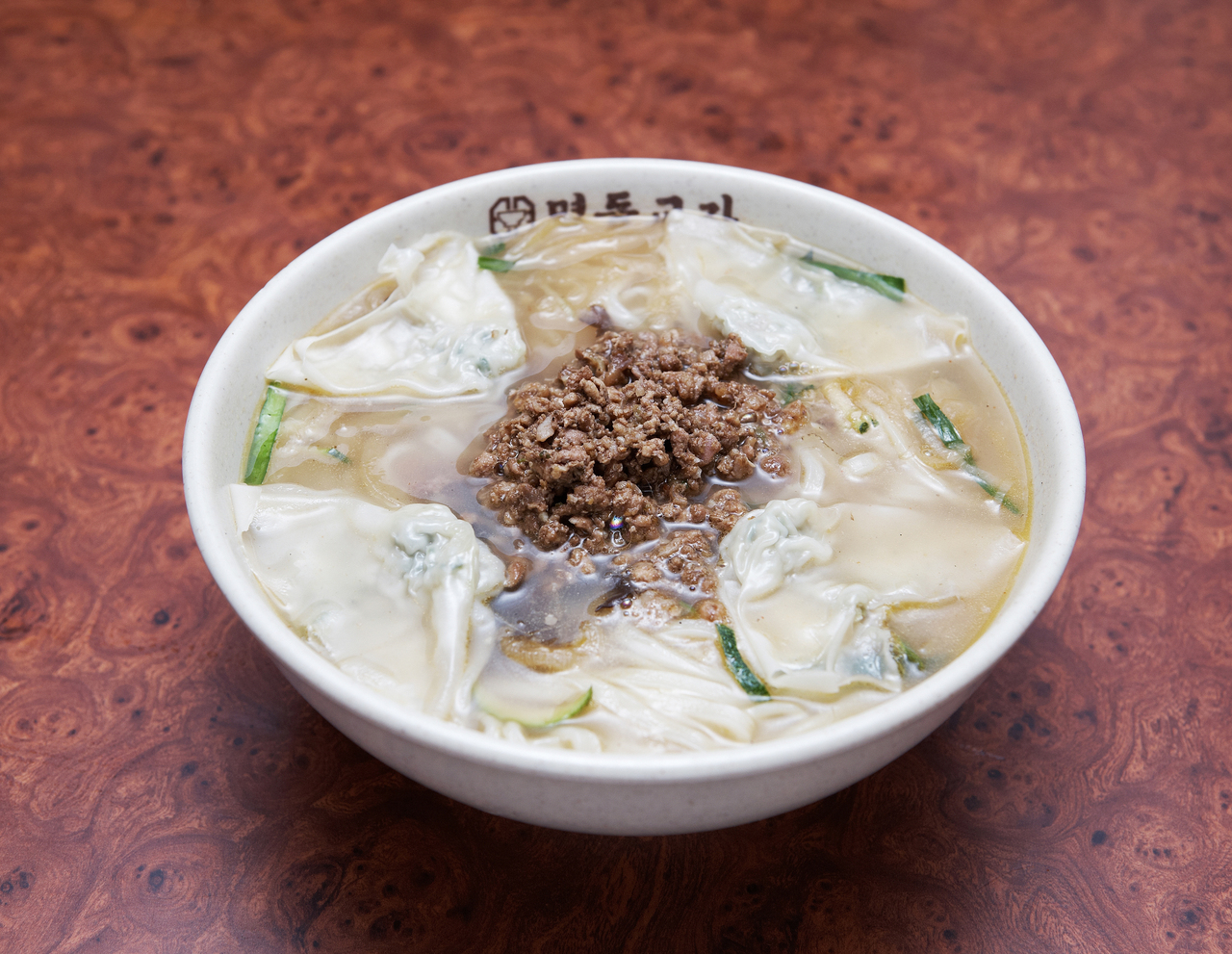
What is Kalguksu?
Kalguksu (칼국수) is a traditional Korean noodle soup made with handmade knife-cut noodles. The name “kalguksu” translates to “knife noodles” in Korean, referencing the process of making the noodles by cutting the dough with a knife. This dish is a comforting and beloved part of Korean cuisine, often enjoyed year-round. Here’s more about kalguksu:
Noodles: Kalguksu noodles are handmade from a dough of wheat flour, water, and sometimes a bit of salt. The dough is rolled out and then cut into thin, flat noodle strips using a knife. This method gives the noodles a rustic and uneven appearance, which contributes to the dish’s charm.
Soup Base: The broth for kalguksu is typically made by simmering ingredients like chicken, seafood, or anchovies with vegetables to create a flavorful base. The broth can vary in taste and richness, with some versions being more mild and others more robust.
Variations: There are several variations of kalguksu, each with its own unique flavors and ingredients. Some popular variations include:
Seafood Kalguksu: This version features a seafood-based broth, often with ingredients like clams, shrimp, squid, and various fish. It’s known for its delicate and slightly briny flavor.
Chicken Kalguksu: This variation uses a chicken-based broth and is often enjoyed with shredded chicken meat and vegetables.
Vegetable Kalguksu: For a vegetarian option, vegetable broth is used, and the dish is filled with a variety of fresh vegetables.
Spicy Kalguksu: Some versions of kalguksu include spicy elements, often with gochugaru (red pepper flakes) added to the broth for a kick of heat.
Toppings and Accompaniments: Kalguksu is typically served with various toppings and accompaniments, such as sliced vegetables, mushrooms, kimchi, and sometimes a boiled egg. Diners can customize their bowls by adding these elements according to their preferences.
Regional Variations: Kalguksu is enjoyed throughout South Korea, and different regions may have their own variations and local ingredients. For example, coastal areas might incorporate more seafood, while mountainous regions might use wild greens.
Cultural Significance: Kalguksu holds cultural significance as a comforting and satisfying dish. It’s often enjoyed as a way to warm up during colder months, but it’s also a favorite year-round.
Modern Variations: While traditional kalguksu remains popular, modern interpretations may incorporate additional ingredients, fusion flavors, and creative presentations.
In summary, kalguksu is a traditional Korean noodle soup made with handmade knife-cut noodles and flavorful broths. Its rustic charm, regional variations, and heartwarming qualities make it a beloved and enduring part of Korean culinary culture.
Image : www.hansikmagazine.org 
Image : www.hansikmagazine.org Image source from : Hansikmagazine by 한식진흥원
한식진흥원 : 무심하게 뽑은 수제 면발의 마력, 원조 손칼국수 (hansikmagazine.org)
Where to Eat?
서울 손칼국수 맛집_<원조 손칼국수>
A 서울시 성북구 종암로 113 국승호치과의원
T 02-923-0681
H 11:00-20:30Cooking Method
Ingredients for the soup base:
- 8 cups chicken or vegetable broth
- 1 onion, roughly chopped
- 3 cloves garlic, minced
- 2 tablespoons soy sauce
- 1 tablespoon sesame oil
- Salt and pepper to taste
Ingredients for the noodles and toppings:
- 2 cups all-purpose flour
- 1/2 teaspoon salt
- About 1/2 cup water
- 1 cup sliced mushrooms
- 1 cup zucchini, julienned
- 1 cup spinach, roughly chopped
- 1 cup cooked chicken or seafood (optional)
- 2 green onions, chopped
- Roasted seaweed (gim/gim-gui), cut into thin strips (optional)
- Toasted sesame seeds for garnish
Instructions:
- Prepare the soup base: In a large pot, combine the chicken or vegetable broth, chopped onion, minced garlic, soy sauce, and sesame oil. Season with salt and pepper to taste. Bring the mixture to a boil and then reduce the heat to let it simmer while you prepare the noodles and toppings.
- Make the noodle dough: In a mixing bowl, combine the all-purpose flour and salt. Gradually add water while kneading the dough until it forms a smooth and elastic ball. You may need more or less water depending on humidity and other factors. Cover the dough with a damp cloth and let it rest for about 15-20 minutes.
- Roll and cut the noodles: On a floured surface, roll out the dough into a thin sheet. You can use a rolling pin or pasta machine if you have one. Once the dough is rolled out, fold it over several times to create layers. Cut the folded dough into thin strips using a sharp knife. Unfold the noodles and separate them carefully.
- Cook the noodles: Bring a separate pot of water to a boil and add a pinch of salt. Cook the noodles in boiling water for about 3-4 minutes or until they are tender but still slightly chewy (al dente). Drain the noodles and rinse them with cold water to prevent them from sticking together.
- Cook the toppings: In a pan, sauté the sliced mushrooms, julienned zucchini, and chopped spinach until they are cooked through but still vibrant and slightly crunchy.
- Assemble the Kalguksu: In individual serving bowls, place a portion of the cooked noodles. Ladle the hot soup base over the noodles, covering them completely. Add the sautéed vegetables and cooked chicken or seafood (if using) on top of the noodles and broth.
- Garnish with chopped green onions, roasted seaweed strips (if using), and toasted sesame seeds.
- Serve the Kalguksu hot and enjoy!
Famous place for Kalguksu in Korea
There are numerous places in South Korea where you can find delicious and famous one. Keep in mind that the popularity of specific restaurants may vary over time, but here are a few well-known places for kalguksu in different regions of Korea:
- Myeongdong Kyoja (명동교자) – Seoul: Myeongdong Kyoja is a renowned restaurant in Seoul known for its handmade one and other traditional Korean noodle dishes. The restaurant has been serving these dishes for decades and is a favorite among locals and visitors.
- Sikmul Kalguksu (식물칼국수) – Jeonju: Jeonju is known for its rich culinary heritage, and Sikmul Kalguksu is a popular spot in the city to enjoy the local style of it. The noodles here are often made with a mixture of wheat and buckwheat flour, resulting in a unique flavor and texture.
- Namwon Kalguksu (남원칼국수) – Namwon: Namwon, located in North Jeolla Province, is famous. Namwon Kalguksu is particularly renowned for its hearty and flavorful chicken one, making it a must-visit for those exploring the region.
- Busan Milmyeon (부산밀면) – Busan: While not traditional one, Busan Milmyeon is a well-known spot in Busan that serves a similar dish called “milmyeon,” which features thin wheat noodles in a spicy broth with various toppings.
- Dongbaekseom Kalguksu (동백섬칼국수) – Gangneung: Located in the coastal city of Gangneung, Dongbaekseom Kalguksu offers a unique version of it that includes fresh seafood sourced from the region’s waters.
- Andong Jjimdak & Kalguksu Alley (안동찜닭&칼국수거리) – Andong: This alley in Andong is famous for both kalguksu and jjimdak (a braised chicken dish). It’s a great place to sample the local flavors of both dishes.
Recommend to Read >> JogaeGui, The Most Famous Shellfish Dishes Nov. 2023 – Korean Food Nearby
-
Bibimbap: A Delicious Journey Through Korean Cuisine Aug 2023.
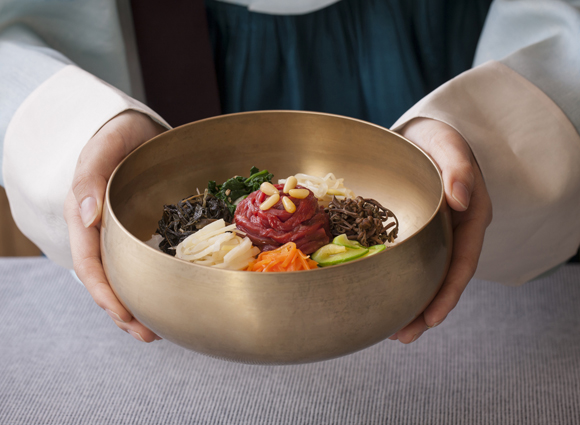
Bibimbap: A Delicious Journey Through Korean Cuisine
Introduction:
Bibimbap (비빔밥), a vibrant and flavorful Korean dish, has become a global sensation, captivating taste buds and hearts worldwide. This iconic Korean creation showcases a harmonious blend of colors, textures, and flavors that come together in a single bowl. In this article, we’ll take you on a culinary journey through the world of Bibimbap, exploring its origins, ingredients, variations, and the art of savoring this delightful dish.
Unveiling the Beauty of Bibimbap:
1. Origins :
Bibimbap traces its roots to Korea, where it has been a beloved dish for centuries. The name “Bibimbap” translates to “mixed rice,” reflecting its preparation method of mixing various ingredients with a bed of steamed rice. Its history is steeped in Korean culture, appearing in ancient royal court cuisine and as a cherished homemade meal.
2. The Art of Mixing:
At the heart of Bibimbap lies the art of mixing. A typical it’s bowl features a colorful array of vegetables, such as carrots, cucumbers, spinach, bean sprouts, and mushrooms. These veggies are often accompanied by protein sources like bulgogi (marinated beef), tofu, or a fried egg. The final flourish is a dollop of gochujang, a spicy and savory red pepper paste that infuses the dish with a bold kick.
3. Regional Variations:
Korea’s diverse culinary landscape has given rise to regional variations of Bibimbap. Jeonju Bibimbap, for instance, hails from the city of Jeonju and is known for its artful presentation and high-quality ingredients. Similarly, Dolsot Bibimbap is served in a sizzling hot stone bowl, creating a crispy layer of rice at the bottom.
4. A Wholesome and Nutritious Feast:
It isn’t just a treat for the taste buds; it’s a nutritious powerhouse. Packed with an abundance of vegetables, lean proteins, and rice, it provides a balanced meal that’s as satisfying as it is healthy. The diverse range of ingredients ensures that each bite is a burst of flavor and nutrition.
5. Bibimbap Beyond Borders:
In recent years, it’s popularity has transcended borders, captivating international palates. Korean restaurants around the world now serve their take on this delectable dish, introducing it to a global audience eager to explore Korean cuisine.
Savoring the Experience:
Part of the joy of Bibimbap is the experience of mixing and customizing your bowl to your taste. The vibrant colors and contrasting textures make it a visually appealing dish, and the combination of flavors offers a delightful sensory journey. Whether you’re enjoying it at a Korean restaurant, trying it at home, or exploring regional variations, Bibimbap invites you to embrace its artful chaos.
Conclusion:
This is more than a dish; it’s a celebration of diversity and harmony on a plate. With its roots in Korean tradition and its global appeal, it’s a testament to the power of food to connect cultures and create moments of culinary bliss. So, the next time you’re in the mood for a flavorful adventure, consider embarking on a special journey, and savor every delightful bite.
Bibimbap Festival, Jeonju City.
The Bibimbap Festival in Korea is a vibrant celebration of one of Korea’s most beloved dishes, Bibimbap. This annual event typically takes place in various regions across South Korea, with different cities and towns hosting their own unique versions of the festival.
The Festival offers a wonderful opportunity for locals and tourists alike to come together and celebrate Korean culture and cuisine. Here are some key features and activities commonly found at the Festivals:
- Tasting: Visitors can sample a wide variety of Bibimbap dishes prepared by local restaurants and vendors. These often showcase regional ingredients and flavors, allowing attendees to explore different regional variations of the dish.
- Cooking Demonstrations: Renowned chefs and culinary experts often conduct live cooking demonstrations, sharing tips and techniques for making the perfect one.
- Making Contests: Participants, both amateur and professional, can join Bibimbap-making contests to showcase their culinary skills. Judges evaluate entries based on taste, presentation, and creativity.
- Food Stalls and Vendors: Beyond Bibimbap, festival-goers can enjoy a wide range of Korean street food and snacks, adding to the culinary adventure.
- Cultural Performances: The festivals often feature traditional Korean performances, including music, dance, and martial arts displays, providing a rich cultural experience.
- Art and Craft Exhibitions: Visitors can explore art and craft exhibitions, often showcasing traditional Korean handicrafts and artwork.
- Local Produce and Crafts: Many Festivals also include marketplaces where local artisans and farmers sell their products, making it a great opportunity to purchase unique souvenirs and regional specialties.
- Interactive Workshops: Festival-goers can participate in various workshops, such as making kimchi or traditional Korean crafts, allowing for hands-on experiences.
- Food Challenges: Some festivals even offer food challenges where participants attempt to consume massive bowls of Bibimbap within a certain time limit.
- Cultural Exchange: The festivals often attract international visitors, promoting cultural exchange and showcasing Korean cuisine to the world.
The Bibimbap Festival is a lively and colorful celebration that brings people together to enjoy the diverse and delicious world of Bibimbap. If you have the opportunity to visit South Korea during one of these festivals, it’s a fantastic way to immerse yourself in Korean culture and savor the flavors of this iconic dish.
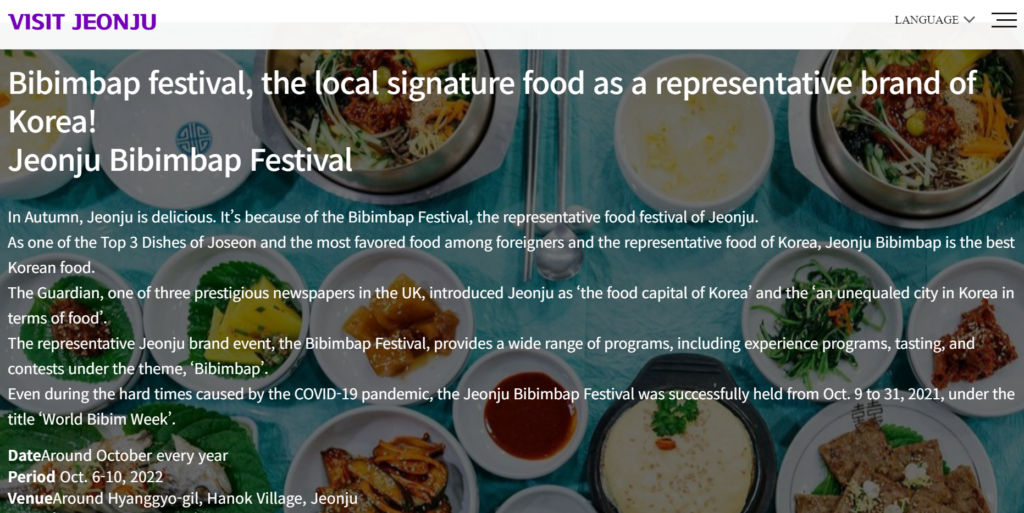
jeonju festival Cooking Method
Ingredients:
For the Bibimbap bowl:
- 2 cups of cooked short-grain white rice (preferably Korean or sushi rice)
- Assorted vegetables (e.g., carrots, spinach, bean sprouts, cucumber, zucchini, and mushrooms)
- Protein of your choice (e.g., bulgogi, tofu, or a fried egg)
- Gochujang (Korean red pepper paste)
- Sesame oil
- Soy sauce
- Sugar
- Salt
- Toasted sesame seeds
- Vegetable oil (for sautéing)
Instructions:
1. Prepare the Vegetables:
- Julienne or thinly slice the vegetables. You can blanch or sauté them lightly for a few minutes to soften and season them.
2. Prepare the Protein:
- If you’re using bulgogi or any other protein, cook it according to your preferred method. Bulgogi is often marinated in a mixture of soy sauce, sugar, sesame oil, garlic, and ginger, then stir-fried.
3. Make Gochujang Sauce:
- In a small bowl, combine 2 tablespoons of gochujang (Korean red pepper paste), 1 tablespoon of sugar, 1 tablespoon of soy sauce, and 1 tablespoon of sesame oil. Adjust the quantities to achieve your desired level of spiciness and sweetness.
4. Assemble the Bibimbap:
- Start with a bowl of cooked rice as the base.
- Arrange the assorted vegetables and protein on top of the rice in a visually appealing manner. Traditionally, each ingredient is placed in its own section around the bowl, creating a colorful and organized presentation.
- Optionally, add a sunny-side-up fried egg on top.
5. Drizzle with Sesame Oil:
- Generously drizzle the Bibimbap with toasted sesame oil. This not only adds flavor but also enhances the dish’s aroma.
6. Add Gochujang Sauce:
- Spoon the gochujang sauce over the ingredients. The gochujang will provide a spicy and savory kick to your Bibimbap.
7. Garnish with Sesame Seeds:
- Sprinkle toasted sesame seeds over the top for added texture and nuttiness.
8. Mix and Enjoy:
- Bibimbap means “mixed rice” in Korean, so it’s time to mix everything together. Use a spoon or chopsticks to thoroughly combine the rice, vegetables, protein, gochujang sauce, and sesame oil. Mixing is not just a practical step; it’s part of the Bibimbap experience!
9. Taste and Adjust:
- Taste your Bibimbap and adjust the flavors as needed. You can add more gochujang sauce, sesame oil, or soy sauce to suit your palate.
10. Serve and Enjoy:
- Transfer your beautifully mixed Bibimbap to a plate or bowl and savor every bite of this delightful Korean dish.
Bibimbap is not only a delicious meal but also an artful one. Feel free to get creative with your ingredient choices and presentation. This versatile dish allows you to customize it to your liking, making it a delightful culinary adventure in your own kitchen.
Recommend to Read >>>Jjajangmyeon, Korean Black Noodle Aug, 2023.
-
Bulgogi (불고기) Grilled Meat with Soy Sauce Sep 2023.
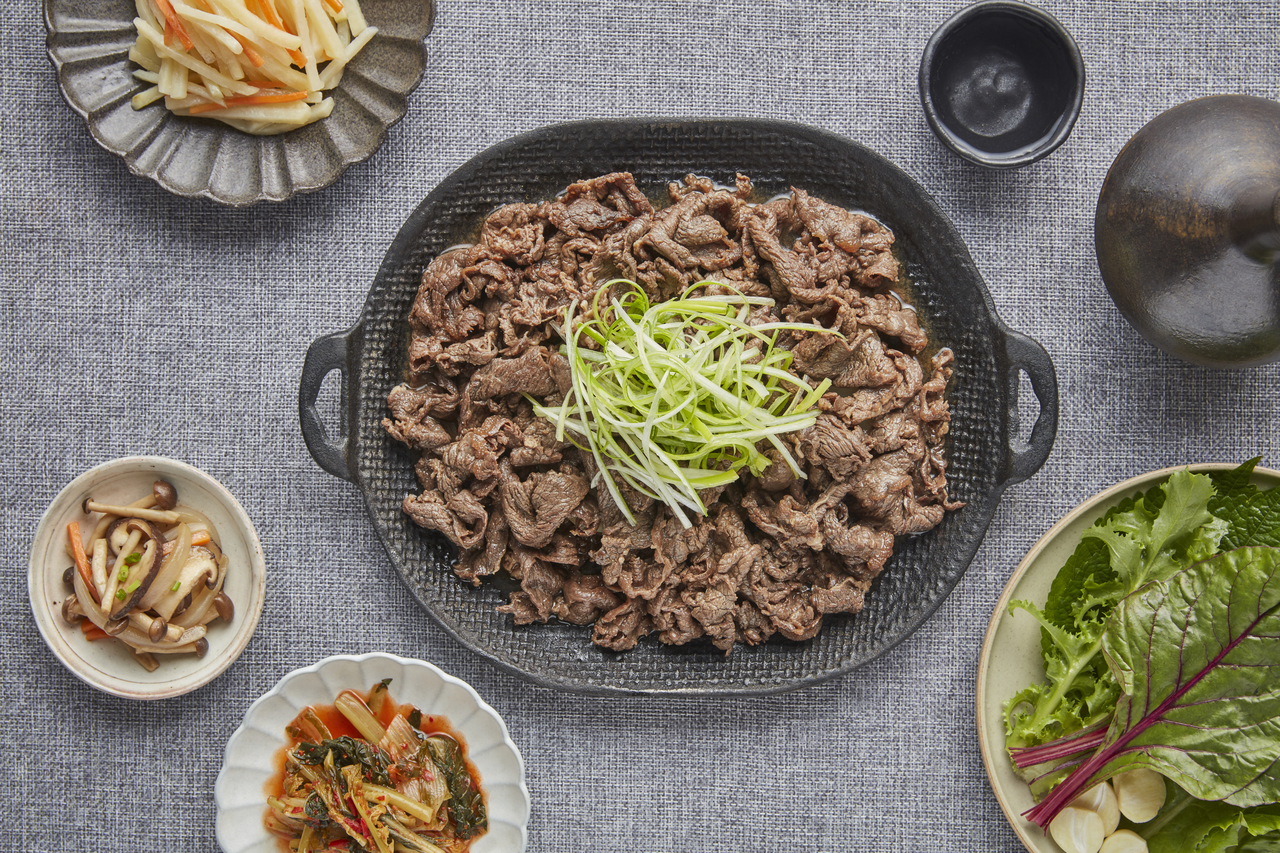
What is Bulgogi?
Bulgogi is a classic Korean dish made of thinly sliced or marinated beef (sometimes pork or chicken) that is grilled or pan-fried. The name “Bulgogi” translates to “fire meat” in Korean, which reflects the traditional method of cooking it over an open flame. It’s a popular and well-loved dish in Korea and has gained international popularity for its delicious and unique flavor.
To prepare Bulgogi, thin slices of meat are marinated in a mixture of soy sauce, sugar, sesame oil, garlic, ginger, and other seasonings. This marinade infuses the meat with a sweet, savory, and slightly smoky flavor. The marinated meat is then cooked quickly, either on a barbecue grill, stovetop griddle, or in a pan, until it’s caramelized and tender.
It is often served with a variety of accompaniments, including rice, lettuce leaves, or perilla leaves, which can be used as wraps. It’s also common to garnish Bulgogi with sesame seeds, sliced scallions, and sometimes a dollop of gochujang (Korean red chili paste) for an extra kick of flavor.
The versatility and delightful taste of Bulgogi have made it a popular dish in Korean cuisine and a favorite in Korean barbecue restaurants worldwide. It’s a great dish for gatherings and can be customized with different meats and vegetables to suit your preferences.
History
The history of Bulgogi, a classic Korean dish, dates back several centuries and reflects the culinary evolution and cultural influences in Korea. While the exact origins are not well-documented, it has a rich history that spans many centuries. Here’s a brief overview of the history of it.
- Ancient Origins: The concept of grilling or cooking thinly sliced or marinated meat over an open flame is not unique to Korea and can be traced back to ancient traditions in many cultures. In Korea, this style of cooking, often associated with meat preparation, evolved over time to become what we now know as Bulgogi.
- Goguryeo and Three Kingdoms Period: The earliest mention of a similar dish to Bulgogi can be traced back to the Three Kingdoms period (57 BC – 668 AD) in ancient Korea. The Goguryeo people, one of the Three Kingdoms, are often credited with grilling meat, and some historians suggest that this could be an early precursor to Bulgogi.
- Mongol Influence: The Mongol invasions and occupations of Korea during the 13th century may have played a role in shaping Korean cuisine, including Bulgogi. The Mongols brought with them their own culinary traditions, which might have influenced the way meat was prepared and cooked in Korea.
- Transition to Modern : The dish that we now recognize as Bulgogi began to take its modern form during the Joseon Dynasty (1392-1910). During this time, soy sauce, garlic, and various spices and seasonings became integral to the dish’s preparation.
- Post-Korean War Era: After the Korean War (1950-1953), it gained popularity and became more accessible to the general population as South Korea underwent economic development and urbanization. Various regional variations one began to emerge, showcasing the diversity of Korean cuisine.
- International Popularity: International recognition and popularity have grown significantly, especially with the global rise of Korean cuisine. It is now a well-known and beloved Korean dish worldwide.
Today, Bulgogi is enjoyed in various forms and with a wide range of accompaniments, including lettuce and perilla leaf wraps, rice, and a variety of banchan (side dishes). It remains a symbol of Korean culinary culture and is often featured in Korean barbecue restaurants both in Korea and around the world. While the origins of Bulgogi may be somewhat murky, its evolution into a delicious and iconic Korean dish is clear.

Bulgogi ⓒ한국관광공사 사진갤러리-알렉스 분도 Cooking Method at Home
Ingredients:
- 1 pound (450g) beef (preferably ribeye or sirloin), thinly sliced
- 1/4 cup soy sauce
- 2 tablespoons brown sugar or honey
- 2 tablespoons sesame oil
- 1 tablespoon rice wine or mirin (optional)
- 3-4 cloves garlic, minced
- 1 small onion, thinly sliced
- 2 green onions, chopped
- 1 tablespoon sesame seeds
- 1/2 teaspoon black pepper
- 1 tablespoon vegetable oil (for cooking)
- Optional garnish: sliced green onions and toasted sesame seeds
Instructions:
- In a bowl, combine soy sauce, brown sugar (or honey), sesame oil, rice wine (or mirin), minced garlic, chopped green onions, sesame seeds, and black pepper. Mix well until the sugar dissolves.
- Add the thinly sliced beef to the marinade and coat it thoroughly. You can use your hands to massage the marinade into the meat. Cover the bowl with plastic wrap or a lid and let it marinate for at least 30 minutes. For the best results, marinate the beef for 1 to 4 hours in the refrigerator.
- In a large skillet or pan, heat the vegetable oil over medium-high heat.
- Add the thinly sliced onions to the pan and sauté them until they become translucent.
- Add the marinated beef to the pan in a single layer, making sure not to overcrowd the pan. Cook the beef for 2-3 minutes on each side until it’s cooked through and caramelized.
- Once the beef is cooked, remove it from the pan and garnish with sliced green onions and toasted sesame seeds if desired.
- Serve the Bulgogi hot with steamed rice and some side dishes like kimchi and lettuce wraps. You can also enjoy it in a Korean-style barbecue wrap (ssam) with lettuce, rice, and other condiments.
Famous Place in Korea
Korea is home to many famous and highly regarded restaurants that serve Bulgogi, but here are a few notable places you might want to consider if you’re looking for an exceptional Bulgogi experience in South Korea:
- Mapo Jeong Daepo (마포정대포): This well-known Korean barbecue restaurant, located in Seoul’s Mapo district, is famous for its high-quality beef and delicious Bulgogi. Their Bulgogi is particularly renowned for its rich flavor and quality ingredients.
- Myeongdong Kyoja (명동교자): While Myeongdong Kyoja is mainly famous for its dumplings and noodles, their Bulgogi is also a must-try dish. The restaurant is located in the heart of Seoul’s bustling Myeongdong shopping district.
- Gogung (고궁): Gogung is a restaurant in Seoul that specializes in traditional Korean cuisine, including Bulgogi. They’re known for their commitment to preserving authentic flavors and recipes.
- Sutbul Bulgogi (숯불한상): This chain of restaurants is famous for its grilled Bulgogi, which is cooked over charcoal for a unique smoky flavor. It’s a popular choice among Bulgogi enthusiasts.
- Pimatgol (피맛골): Pimatgol is known for serving a variety of Korean dishes, and their Bulgogi is well-regarded. The restaurant has a cozy and traditional atmosphere.
- Samcheonggak (삼청각): If you’re looking for a more upscale dining experience, Samcheonggak in Seoul is a hanok (traditional Korean house) restaurant that serves Bulgogi in a beautiful traditional setting.
Please note that restaurant popularity can change over time, and new establishments are always emerging. Additionally, the best place to enjoy Bulgogi can vary based on individual taste preferences. If you’re in South Korea, consider asking locals or checking restaurant reviews to find the most current recommendations for the best Bulgogi restaurants in your area.
Recommend to Read >>> Dakgalbi, Ranked 2nd in “The World’s Best Stir-Fry Meals” Sep 2023
-
Kimchi, Exhibition + Experience In Korea – Sep 2023.
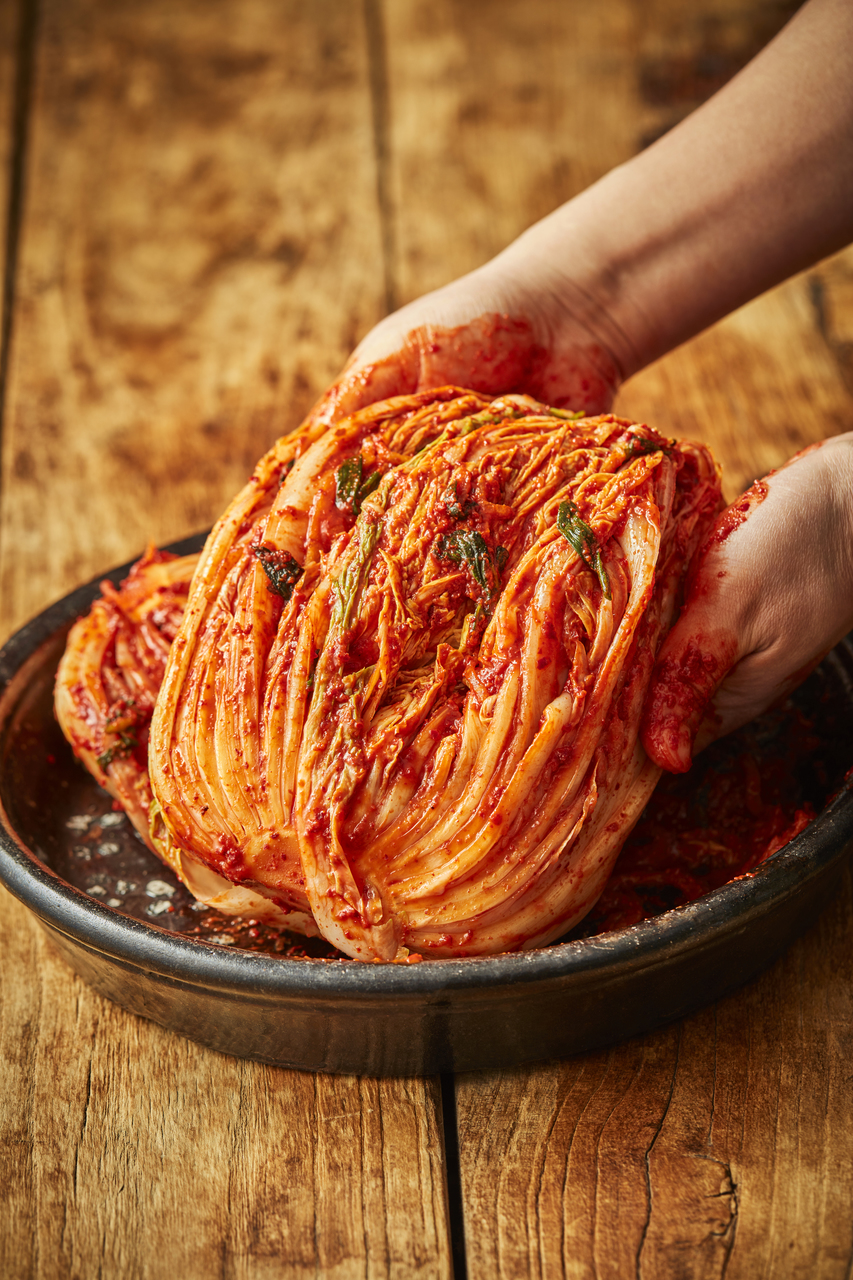
What is Kimchi?
Kimchi is a traditional Korean side dish made from fermented vegetables, with napa cabbage and Korean radishes being the most common choices. It is known for its spicy, sour, and umami flavors. Kimchi is a staple in Korean cuisine and is also popular in other parts of Asia.
The basic process of making it involves salting and then fermenting vegetables. Here’s a general overview of how it’s made:
- Prepare the Vegetables: The primary vegetable used in kimchi is napa cabbage or Korean radishes. These vegetables are usually cut into pieces and then soaked in a saltwater brine. This step helps to soften the vegetables and draw out excess water.
- Make the Paste: The key to kimchi’s unique flavor is the spicy and flavorful paste that’s made from ingredients like gochugaru (Korean red pepper flakes), garlic, ginger, fish sauce, salted shrimp, and sometimes sugar. The combination of these ingredients creates a fiery and pungent sauce.
- Mix Vegetables and Paste: After the vegetables have been soaked and rinsed, they are mixed with the gochugaru paste. The paste is often spread between the leaves or mixed thoroughly with the vegetables, ensuring even distribution of flavors.
- Fermentation: Once the kimchi is prepared, it’s placed in a container or jar and left to ferment at room temperature for a period that can vary from a few days to several weeks, depending on the desired level of fermentation. The container may be sealed or lightly covered, allowing gases produced during fermentation to escape.
- Storage: After the desired fermentation time has passed, it can be refrigerated, which slows down the fermentation process. Properly stored it can last for months or even longer.
It comes in many variations. In addition to the traditional napa cabbage or radish one, there are hundreds of regional and seasonal variations that incorporate different vegetables, seasonings, and levels of spiciness. It is not only a delicious side dish but is also considered a healthy food, as it’s packed with vitamins, probiotics, and other nutrients that can contribute to gut health.
Kimchi is a fundamental part of Korean culture and cuisine, and it’s often served with rice and used as an ingredient in various Korean dishes, including kimchi fried rice, kimchi stew (kimchi jjigae), and kimchi pancakes (kimchijeon). Its bold and complex flavors make it a unique and beloved culinary tradition.
History
It has a long and storied history in Korean cuisine, dating back thousands of years. It is a traditional fermented dish made primarily from vegetables, with napa cabbage and Korean radishes being the most common choices. The preparation and consumption of it are deeply ingrained in Korean culture. Here is a brief overview of the history :
- Ancient Origins: The origins of them can be traced back over two thousand years to the Three Kingdoms period in ancient Korea (57 BC – 668 AD). During this time, vegetables were preserved through a process of salting and fermentation to ensure a stable food supply during harsh winters.
- Introduction of Red Pepper: Red pepper, a key ingredient in modern kimchi that gives it its distinctive spicy flavor, was introduced to Korea in the late 16th century through trade with the Americas. Prior to that, kimchi was typically not spicy.
- Fermentation Techniques: Over the centuries, Koreans developed various fermentation techniques and recipes for it, with different regions and seasons leading to a wide variety of kimchi styles and flavors. Lactic acid fermentation played a central role in this preservation method.
- Cultural and Symbolic Significance: It has deep cultural significance in Korea. It was not just a staple food but also a symbol of Korean identity and an important offering in ancestral rituals. Its red color and connection to preservation were seen as symbols of vitality and longevity.
- Modernization and Commercial Production: In the 20th century, with the modernization of South Korea, kimchi production began to be industrialized, leading to the commercialization of kimchi products. Refrigeration also enabled year-round availability of fresh vegetables, reducing the reliance on kimchi for winter food preservation.
- Global Popularity: In recent decades, Korean cuisine, including kimchi, has gained international popularity. Kimchi is not only consumed in Korea but also widely appreciated in many parts of the world, thanks to its unique flavor and health benefits.
- UNESCO Recognition: In 2013, kimchi and kimjang (the traditional process of making kimchi) were inscribed on UNESCO’s Representative List of the Intangible Cultural Heritage of Humanity. This recognition acknowledges the cultural and social significance of kimchi and kimjang in Korean society.
It’s history is a testament to the resourcefulness and ingenuity of the Korean people in preserving vegetables for the long and harsh Korean winters. Today, it is not only a traditional food but also a beloved and iconic part of Korean culinary heritage, enjoyed by people worldwide.

Kimchi ⓒ한국관광공사 사진갤러리-알렉스 분도 What is Kimjang?
Kimjang is a significant cultural event in Korea that involves the preparation and preservation of kimchi for the winter season. The word “Kimjang” (김장) consists of two Korean characters: “kim” (김) means “salted,” and “jang” (장) means “sauce” or “paste.” Kimjang can be roughly translated to “making kimchi.”
Kimjang typically takes place in late autumn, usually in November or early December, in anticipation of the harsh winter months when fresh vegetables are scarce. It is not just about making it but a communal and family tradition that has deep cultural and social significance in Korea.
Here are some key aspects of Kimjang:
- Community and Family: Kimjang is a communal activity that often involves extended families, neighbors, and friends. It’s an opportunity for people to come together, strengthen bonds, and share in the labor-intensive process of making large quantities of them.
- Preservation for Winter: The primary goal of Kimjang is to prepare and preserve a sufficient amount of them to sustain a family through the winter months when fresh vegetables are scarce. This ensures that there is a stable supply of nutritious and vitamin-rich food during the cold season.
- Traditional Methods: Many families adhere to traditional kimchi-making methods during Kimjang, which may involve preparing and fermenting large quantities of them. This can include using napa cabbage, Korean radishes, and various seasonings to create diverse kimchi varieties.
- Sharing and Gifting: Kimjang is often an occasion for sharing it with neighbors and relatives, as well as for preparing gift sets. These are not only practical gifts but also a gesture of goodwill and care.
- Cultural Significance: Kimjang is an important cultural tradition in Korea and is recognized as an Intangible Cultural Heritage by UNESCO. It reflects the value of community, preparation for harsh seasons, and the importance of traditional food preservation techniques.
- Modern Kimjang: While the tradition of Kimjang remains strong in Korea, it has evolved with modern times. Many families now buy ready-made one, but the communal and sharing aspects of Kimjang persist.
Kimjang is a time-honored practice that emphasizes the importance of community, tradition, and self-sufficiency, as well as the cultural significance of kimchi in Korean society. It remains a cherished tradition in Korean culture and serves as a reminder of the importance of sharing and preparation for the future.
Exhibition, Experience Kimjang in Korea
…
…
…
Recommend to Read >>> Naengmyeon, Chilled Delight: Exploring the Cool Delicacy of it Aug 2023.

